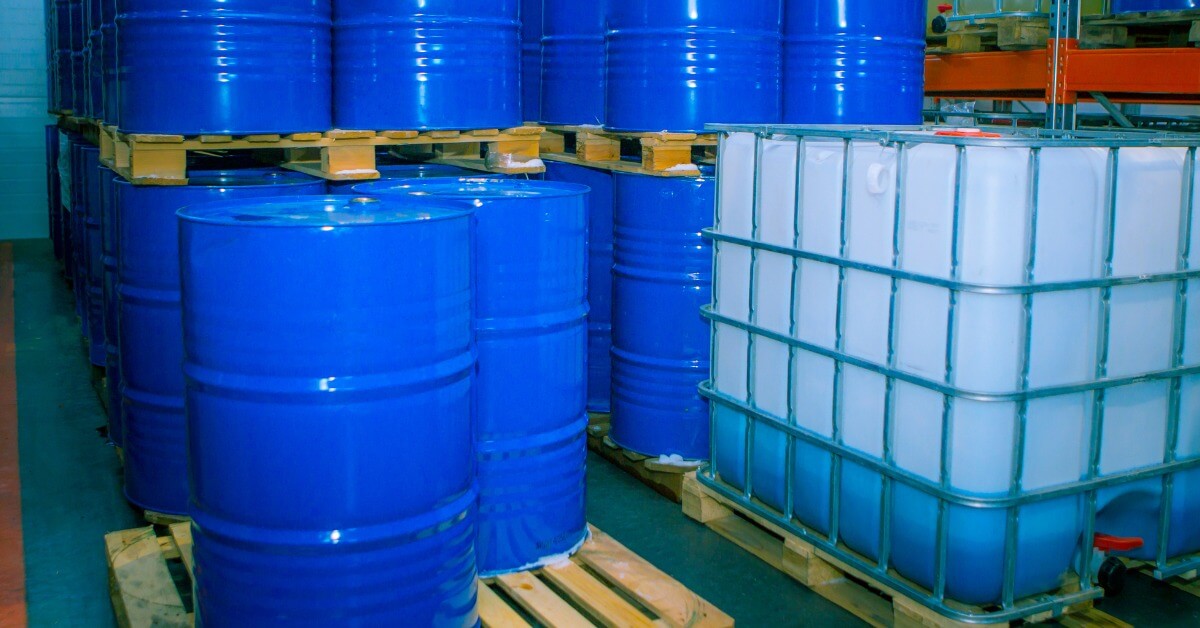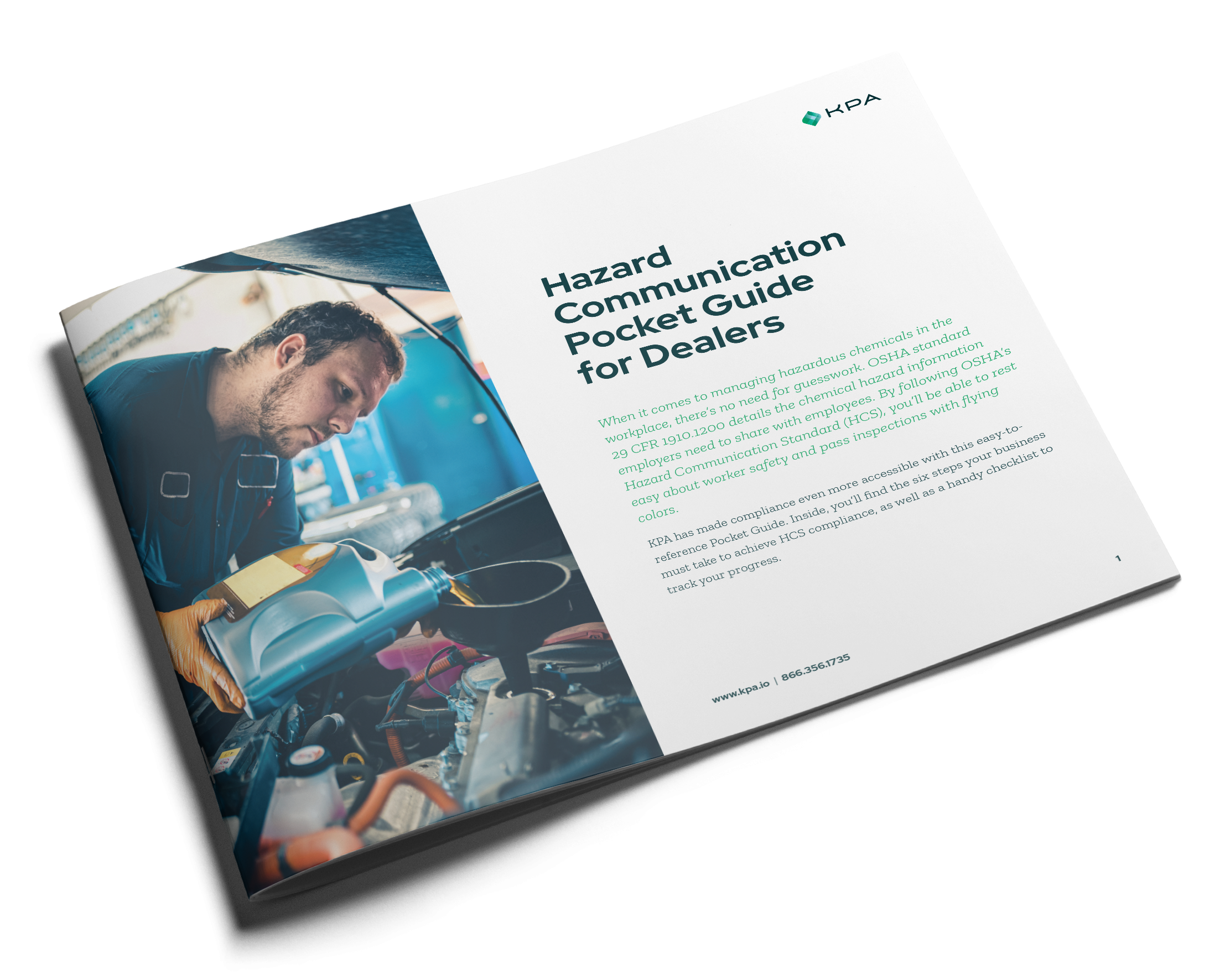Are you using bulk 55-gallon drums of brake cleaner? If so, you need to read this. Many service departments purchase flammable liquids such as brake cleaner, lacquer thinner, gasoline, and others in bulk 55-gallon drums to save on costs. While this may make economic sense, you may have to spend more upfront to comply with flammable liquid storage regulations.

Most formulas of brake cleaner, lacquer thinner, and gasoline are found to be flammable, meaning that they carry a flashpoint of less than 100°F. The “flashpoint” is the minimum temperature at which a liquid gives off vapor in sufficient concentration to form an ignitable mixture with air near the surface of the liquid. Meaning that sparks will ignite the vapors before they get to the liquid, causing fire or explosion.
The OSHA classifications are:
- Category 1 liquids have a flashpoint below 73 °F and have a boiling point at or below 95 °F.
- Category 2 liquids have a flashpoint below 73.4 °F and have a boiling point above 95 °F.
- Category 3 liquids have a flashpoint at or above 73.4 °F and at or below 140 °F.
- Category 4 liquids have a flashpoint above 140 °F and at or below 199.4 °F.
Why does the flashpoint of my bulk products matter?
NFPA 30 and OSHA have regulations regarding the maximum amount of flammable liquids that may be stored without requiring the use of a flammable storage room or cabinet.
Code of Federal Regulations (CFR) 29 CFR 1910.106(e)(2)(ii)[b] states the following:
The quantity of liquid that may be stored without requiring the use of an inside storage room or flammables storage cabinets in any one fire area of a building cannot exceed:
- 25 gallons of Category 1 liquids in containers
- 120 gallons of Category 2, 3, or 4 liquids in containers
- 660 gallons of Category 2, 3, or 4 liquids in a single portable tank
A drum is classified as a container and not a tank.
This means if you have brake cleaner stored in a 55-gallon drum that meets the classification of a Category 1 Flammable liquid, then you will need to keep the drum in one of these places:
- a flammable liquid storage room (a storage room has specific requirements),
- flammable liquid storage cabinet, or
- outside, away from the building.
If your brake cleaner falls into Category 2, 3, or 4, you may keep 2 55-gallon drums in the service department onsite.
Where can I find the flashpoint of the flammable classification of my bulk products?
There are two main ways to find this info:
- contacting the manufacturer, or
- reviewing the SDS (Safety Data Sheet) for the product
The flashpoint is in Section 5—Fire Fighting Measures or Section 9—Physical and Chemical Properties. The boiling point is also in Section 9.
This will help you determine which flammable liquid your brake clean will fall into.

In this pocket guide, we have broken down Hazard Communications into 6 easy steps for you.
I have a Category 1 flammable liquid 55-gallon drum in my shop. What do I need to do?
If you have a Category 1 55-gallon drum stored by a wall in the service department, this is most likely a regulation violation. To correct this, you may consider the following:
- Use a non-flammable liquid method of brake cleaning
- Make a switch to a Category 2, 3, or 4 brake cleaner
- Switch to aerosol cans
- Reduce the size of the drums kept in the shop
- Purchase a flammable cabinet for the drum
- Store the drum in a flammable liquid storage room
- Store the drum outside, away from the building
Much like how there are rules and regulations concerning storing brake cleaner in large drums, there are also regulations about storing other flammable liquids. To ensure that you’re compliant, implement the following at your shop:
Grounding
Flammable liquids dispensed using a metal pump must have an electrical ground installed on the pump or tap. This can be accomplished by connecting a copper wire from the tap to a grounded object.
Keep in mind that not all structures will provide a suitable ground. Putting a screw into a concrete wall would not be a recommended ground. The ground wire should be connected to a nearby water pipe, electrical conduit, or an actual ground rod.
Bonding
Bonding is not the same as grounding. Bonding is the process of connecting the container dispensing the flammable liquid to the container being filled, typically by a copper wire. Bonding is designed to eliminate an electrostatic spark from reaching the flammable vapors.
Category 1, 2, and 3 liquids with a flashpoint below 100 °F must have a bonded connection when dispensing from one metal container to another, such as a 55-gallon drum to a pressurized spray can. This can be accomplished by making a separate bond wire available at the filling area. Make sure you train your employees to attach the bond wire during the filling process.
Flammable Spray Areas
Using brake cleaner in a pressurized spray can be interpreted as a spray area, meaning that surrounding ignition sources must be eliminated.
29 CFR Subpart 1910.107(a)(2) defines a spray area:
Spray Area: Any area in which dangerous quantities of flammable vapors or mists, or combustible residues, dust, or deposits are present due to the operation of spraying processes.
29 CFR Subpart 1910.107(c)(2) states the following:
There shall be no open flame or spark-producing equipment in any spraying area nor within 20 feet thereof unless separated by a partition.
The average mid-sized sedan is 15 feet in length. Due to the regulations above, technicians must delay the spraying of the brake cleaner until all torching, welding, and any other sources of ignition (including vehicle engine ignition) are eliminated or off in the immediate and surrounding bays.
Let’s save the sparks until the 4th of July and the flames for roasting marshmallows.
If you have questions or need further assistance regarding flammable liquid use and storage, we’re here to help. KPA offers environmental risk management services to help you manage chemicals and hazardous waste at your facilities. We help you document procedural compliance and provide guidance on minimizing waste generation and appropriately managing and disposing of waste. Our compliance inspections, plan development, and permitting assistance will help you resolve your environmental compliance challenges.
Related Content
Explore more comprehensive articles, specialized guides, and insightful interviews selected, offering fresh insights, data-driven analysis, and expert perspectives.
